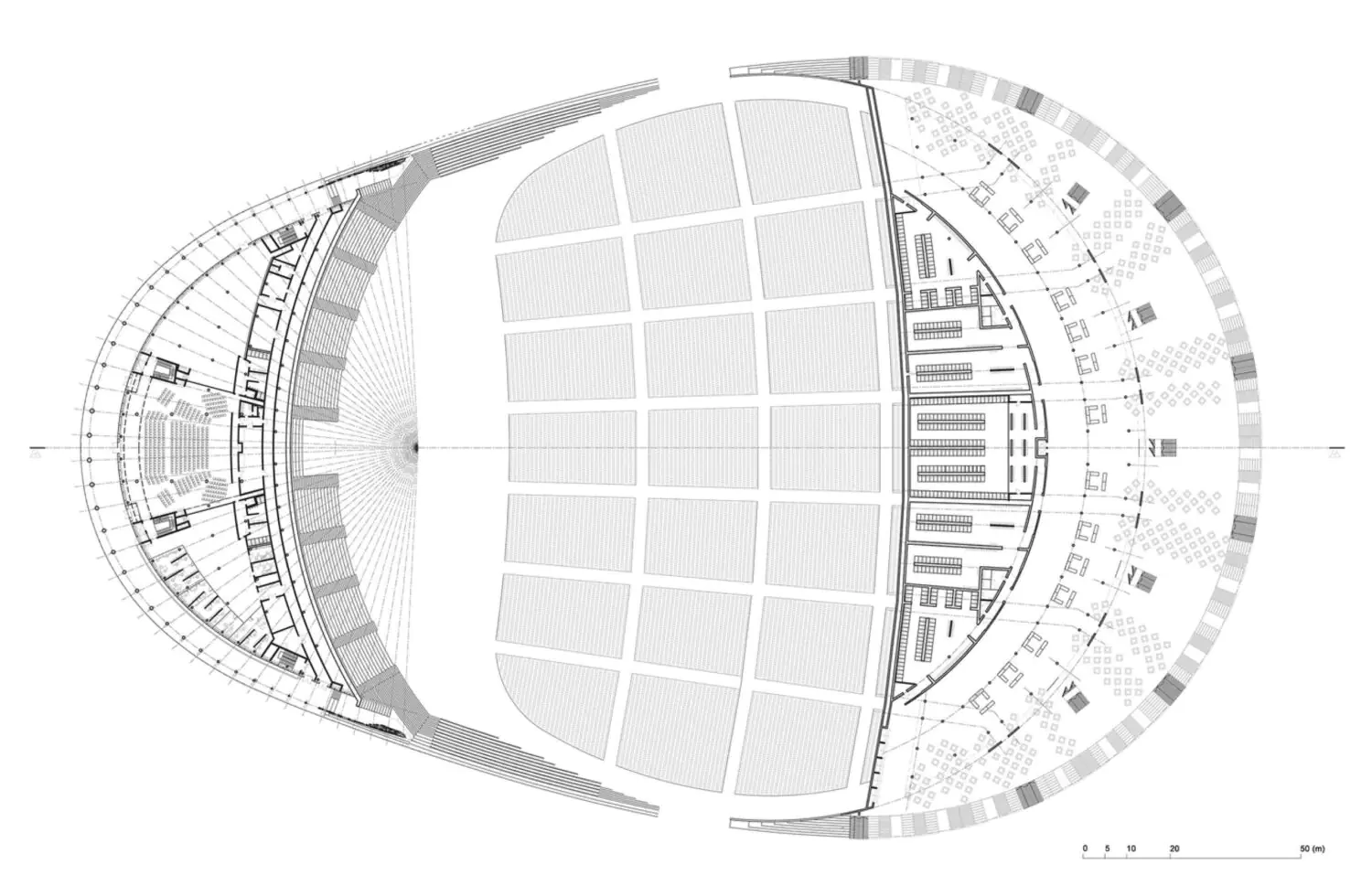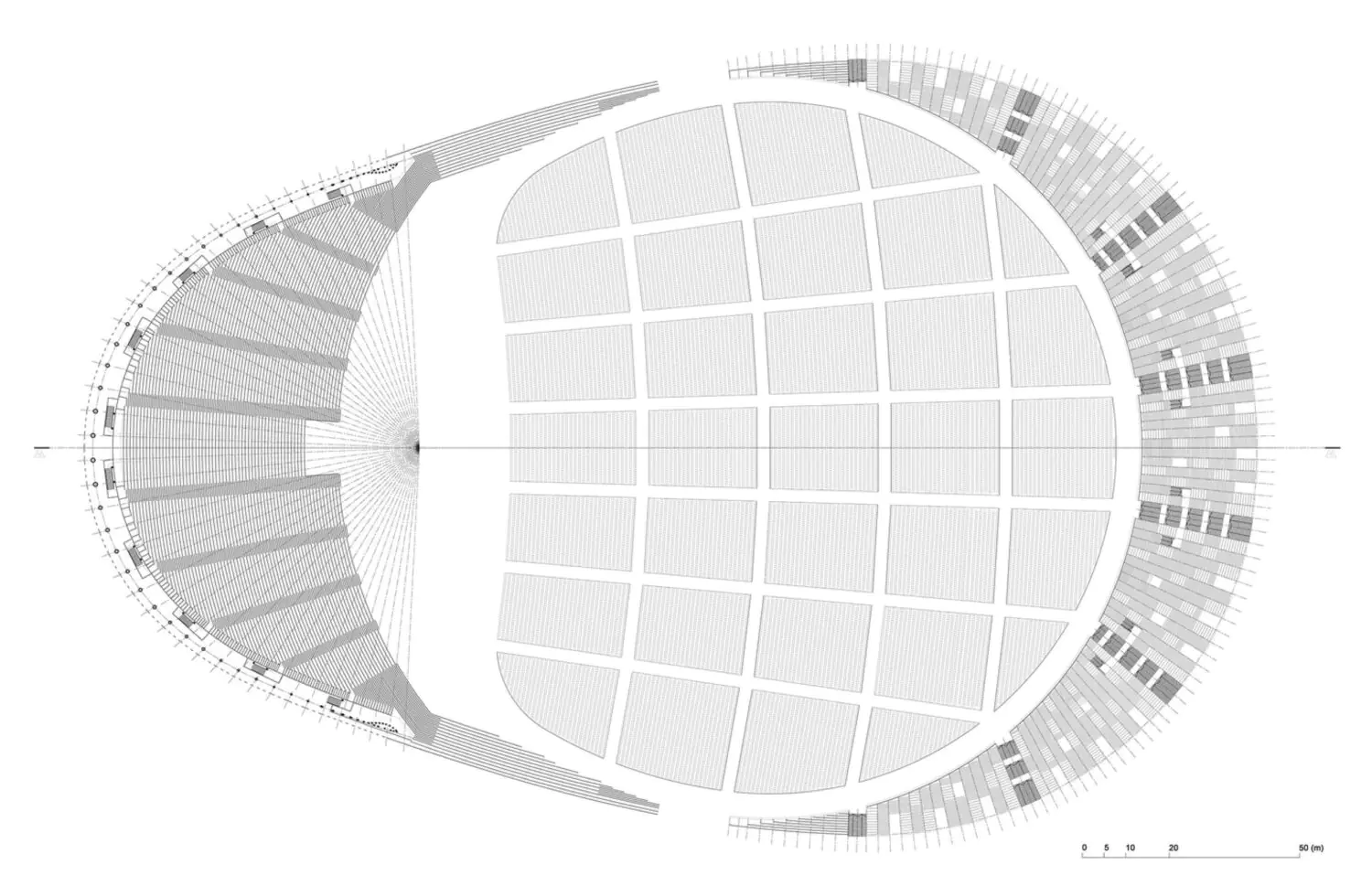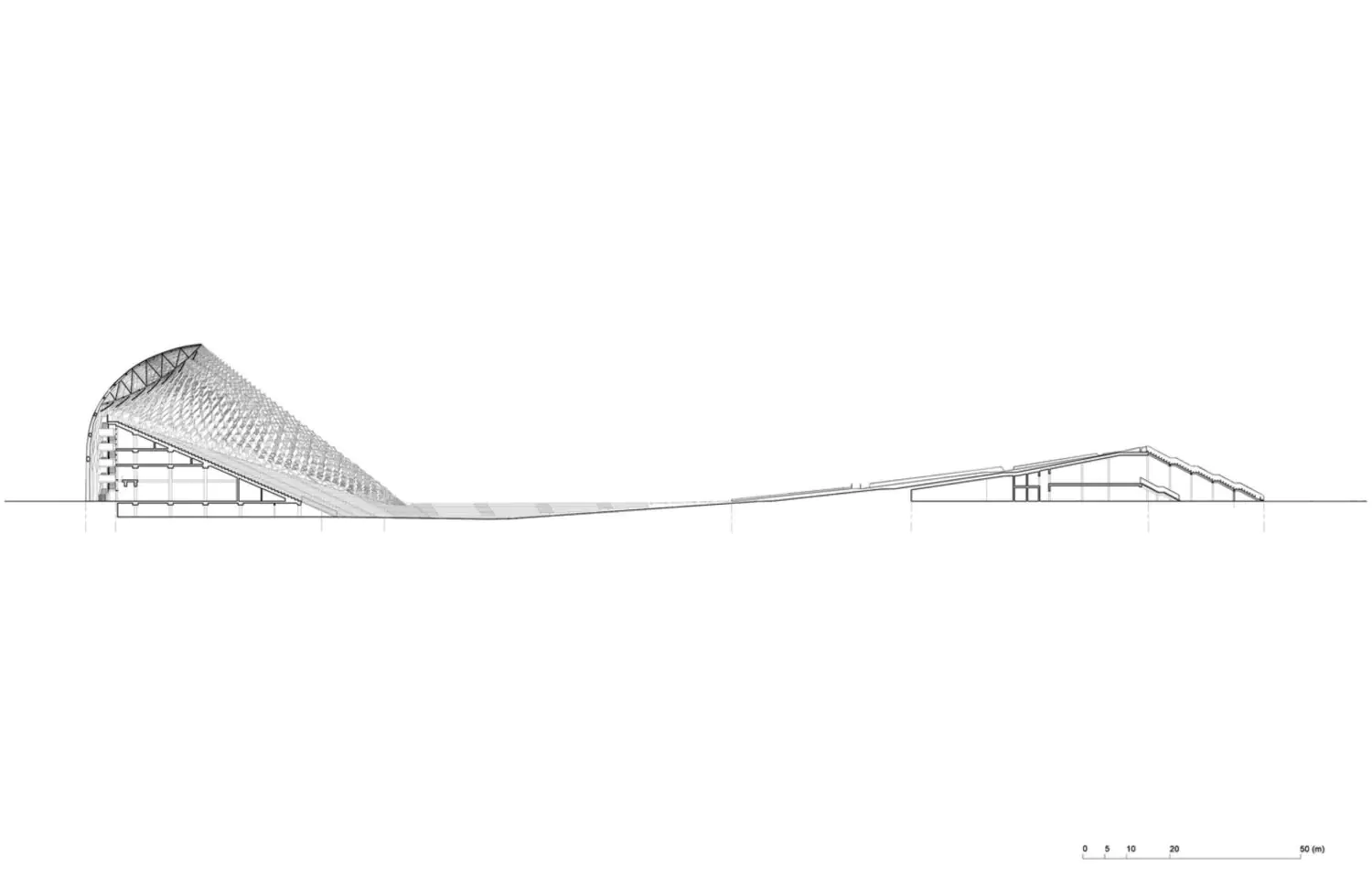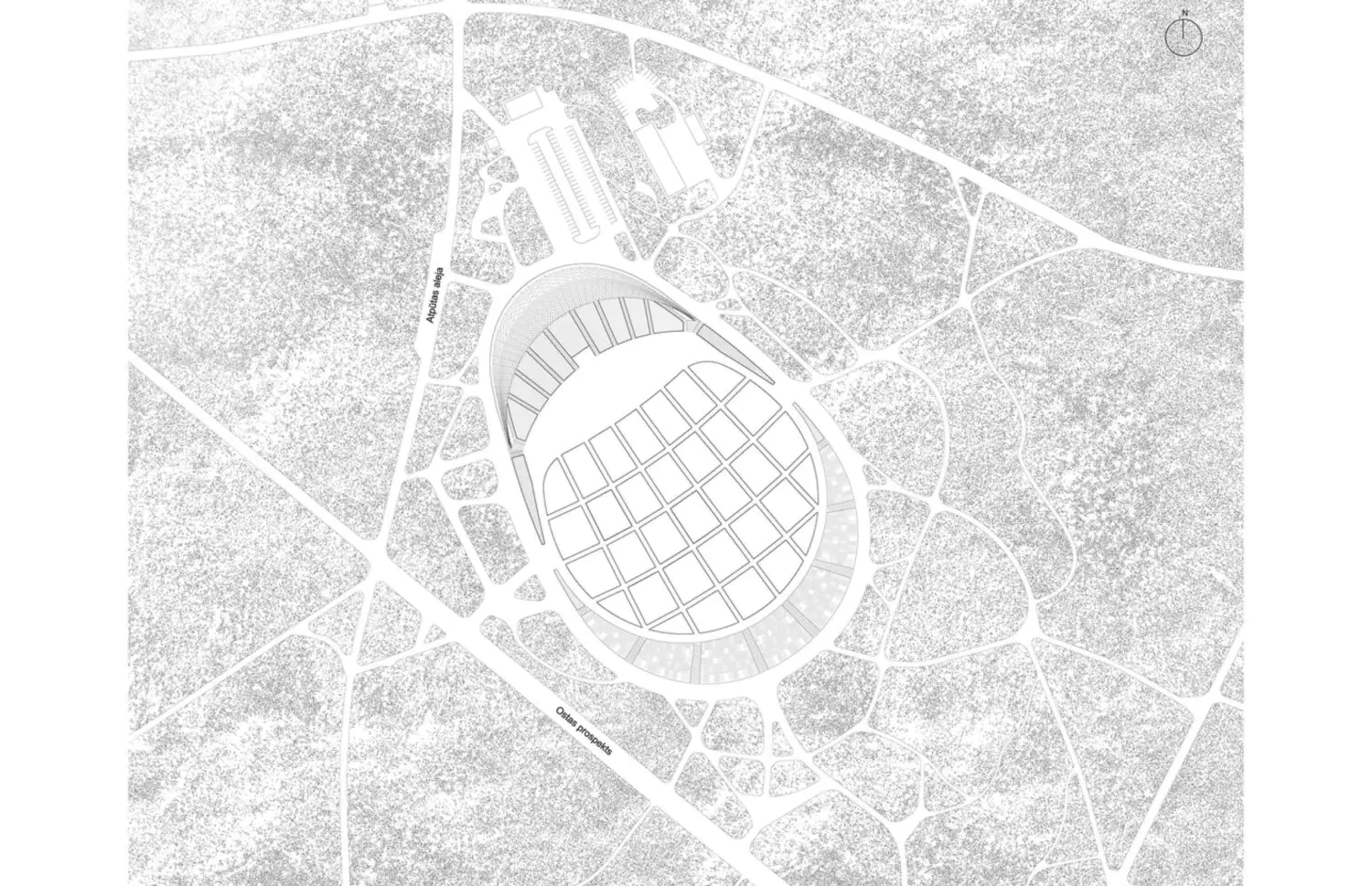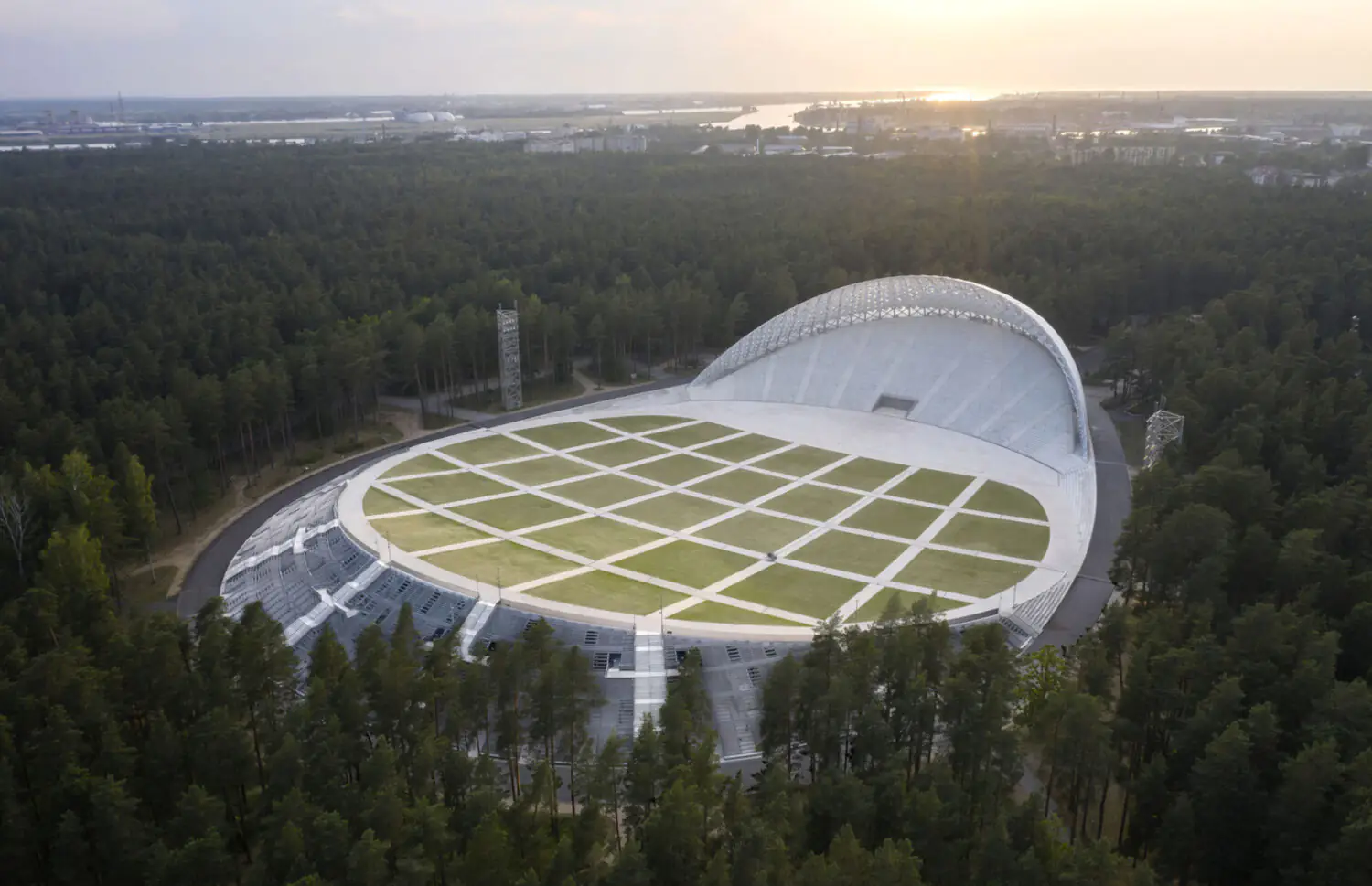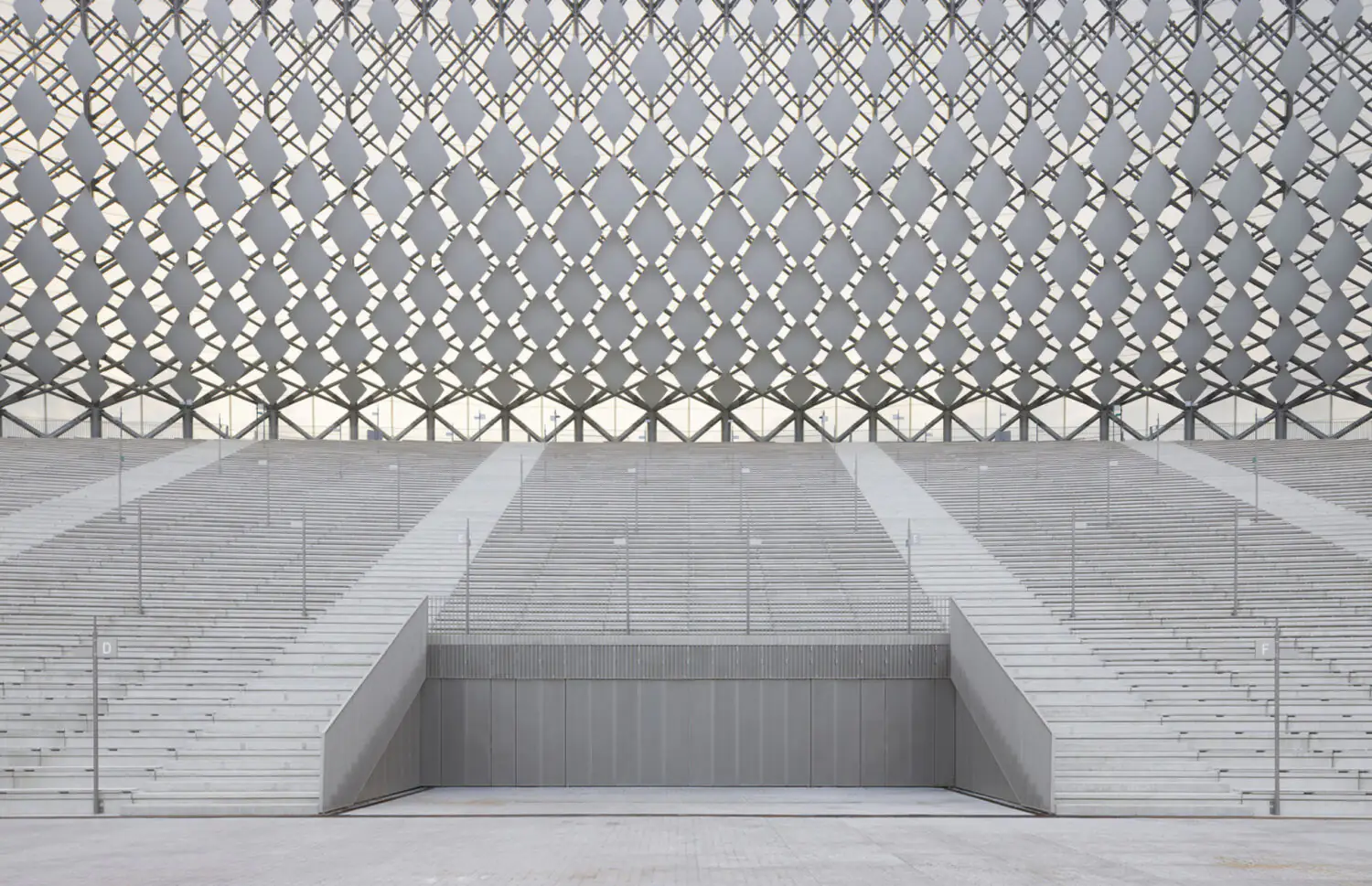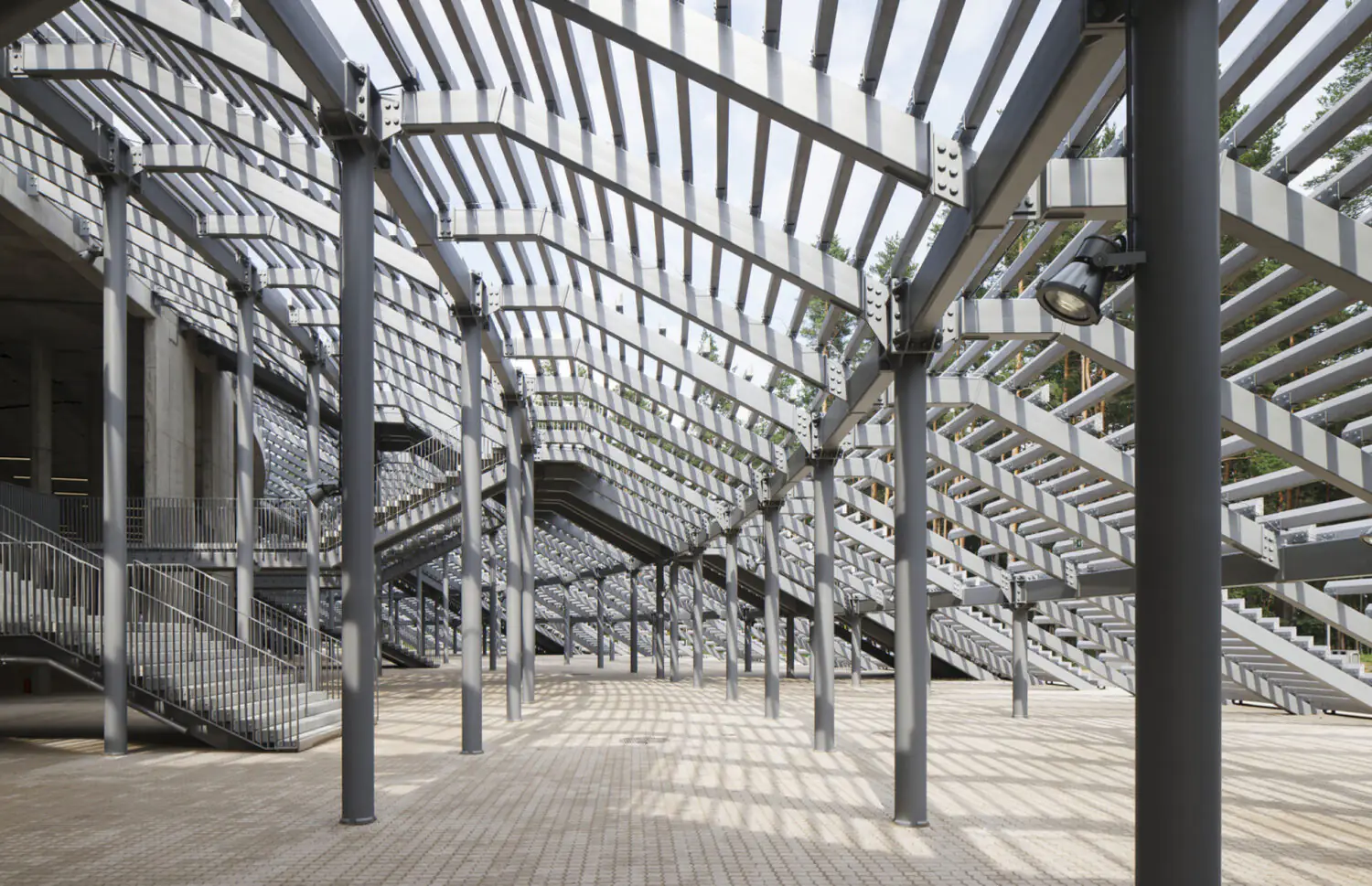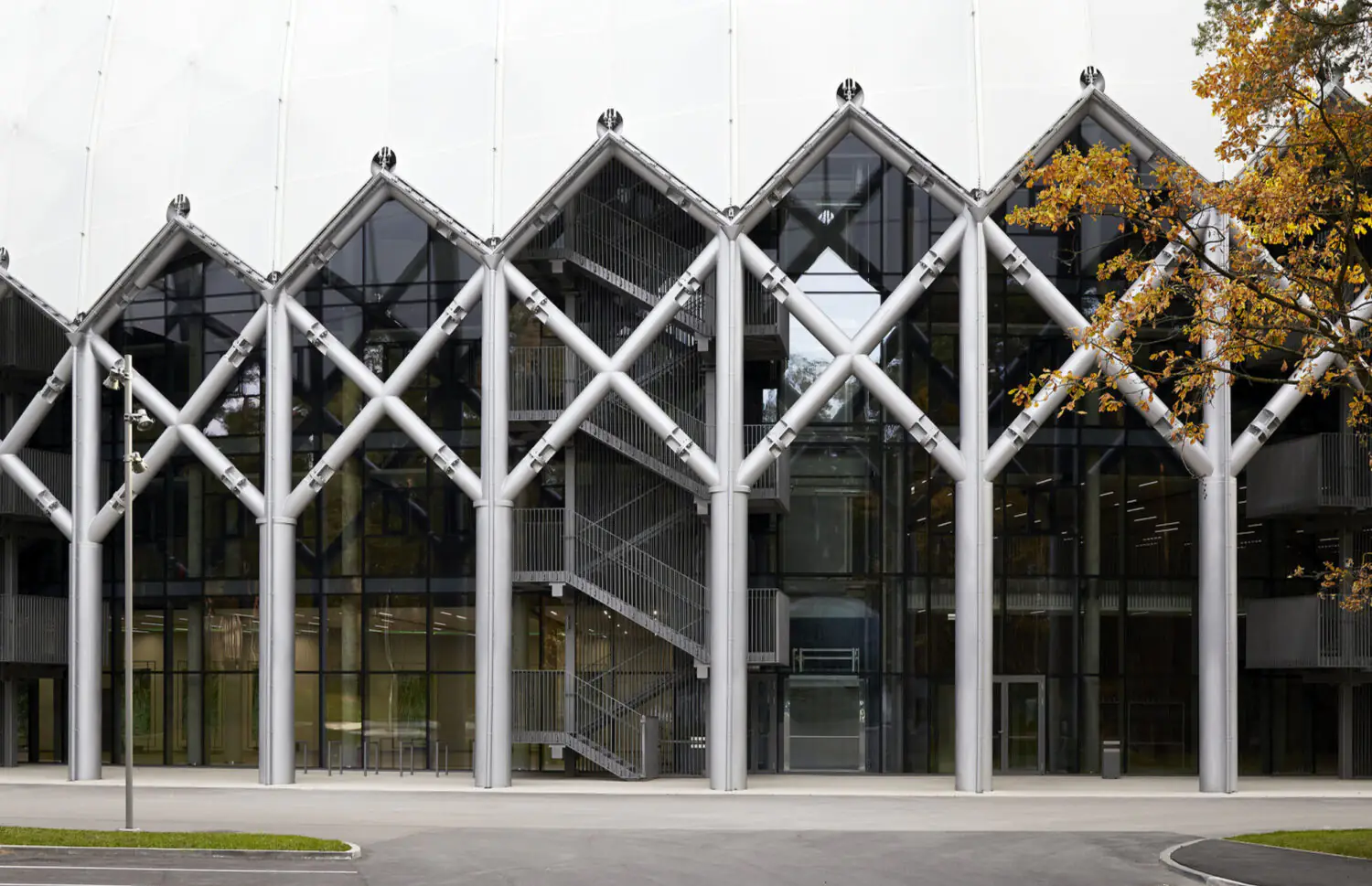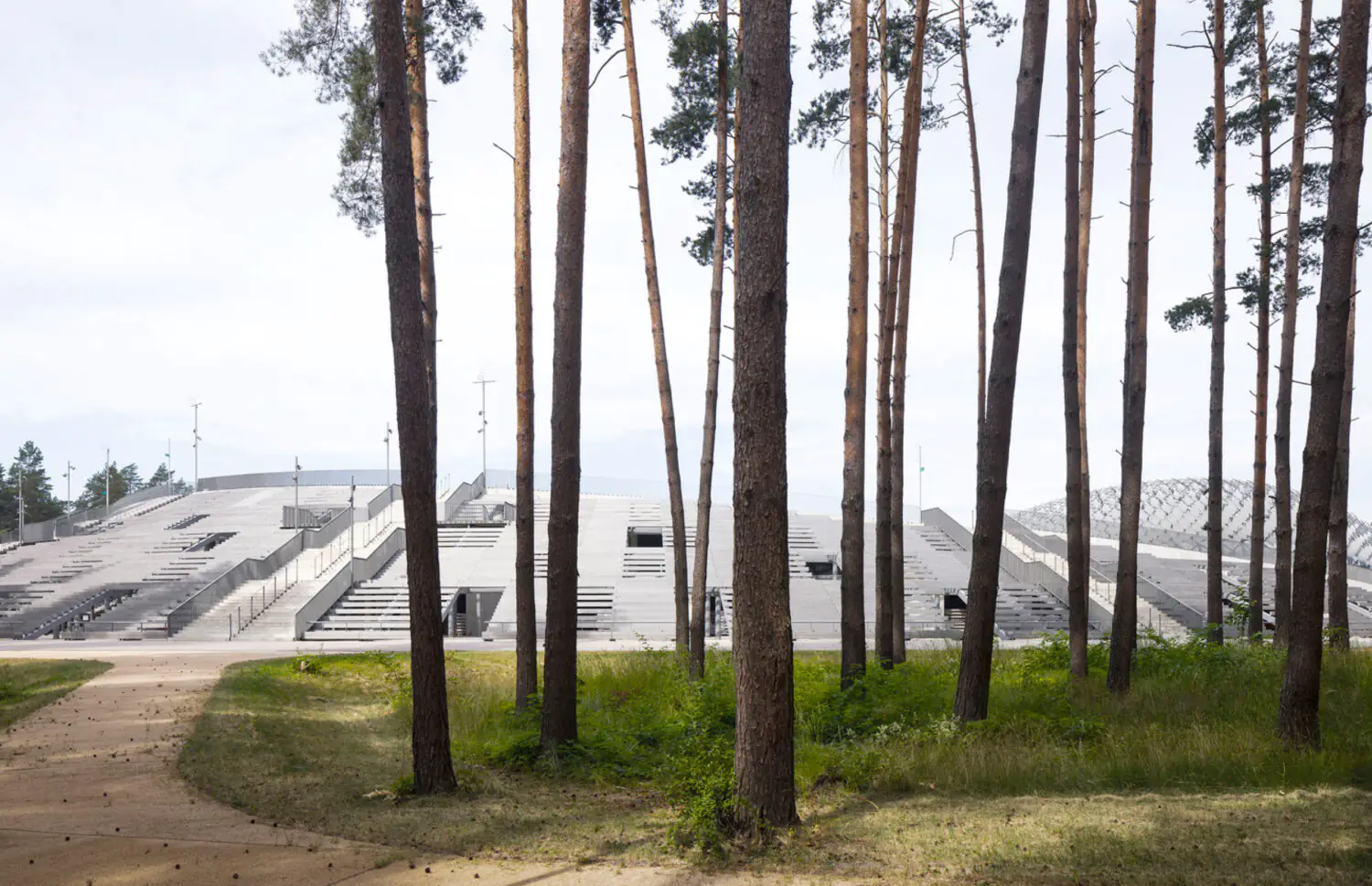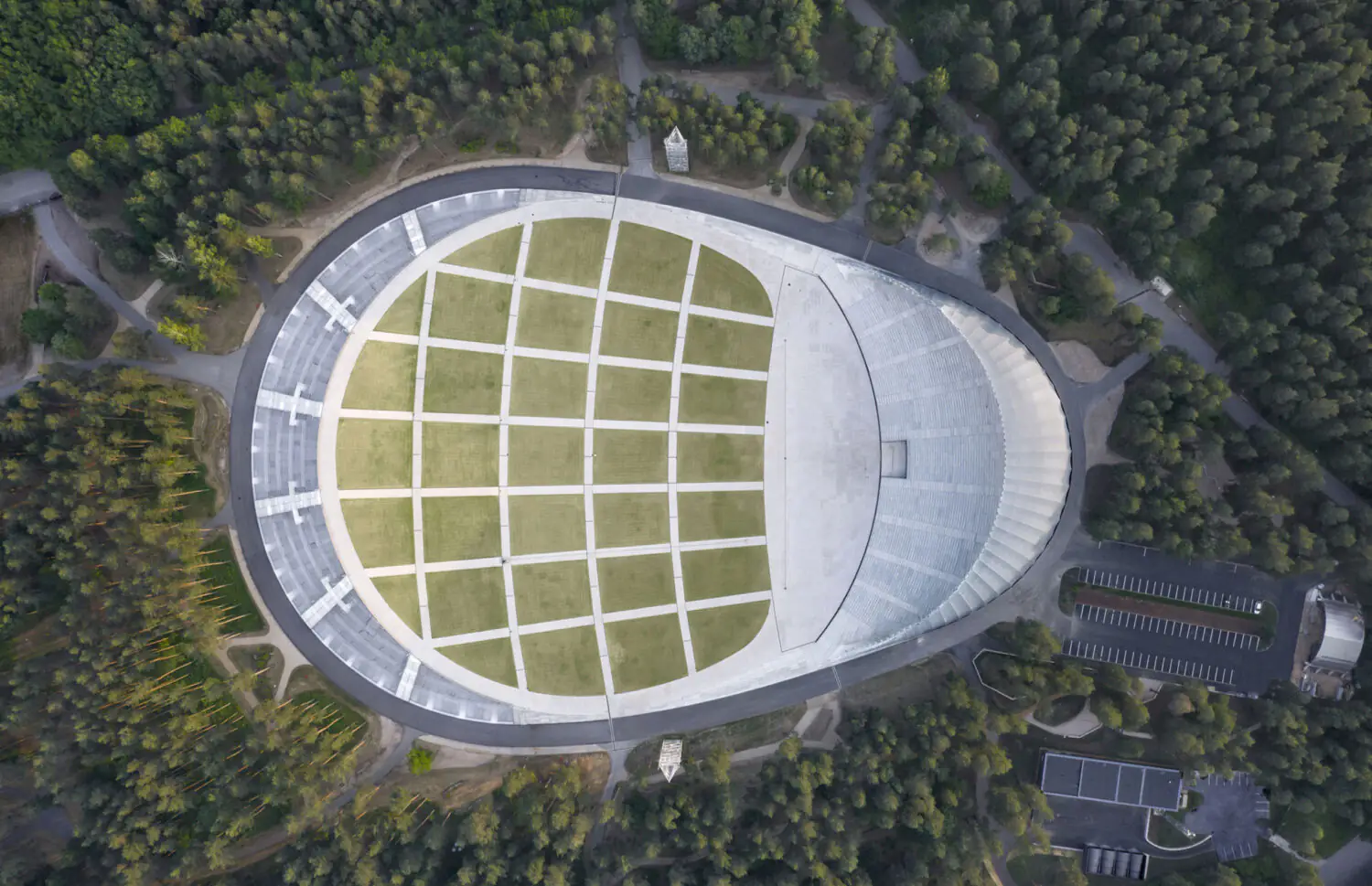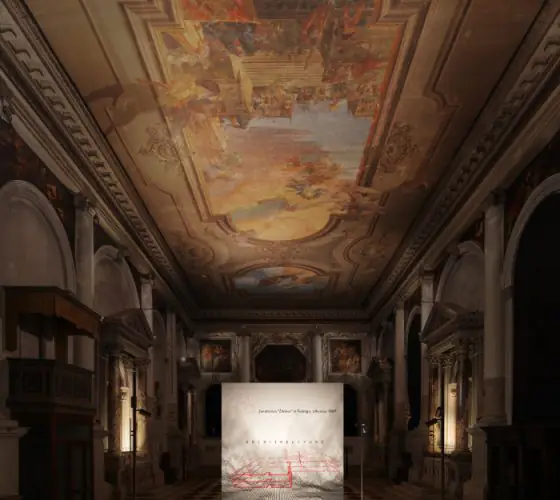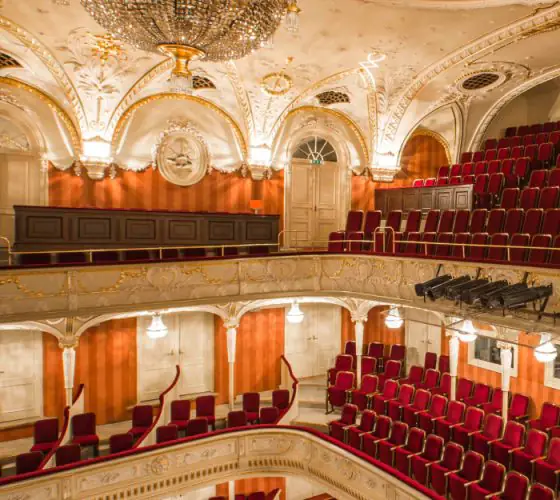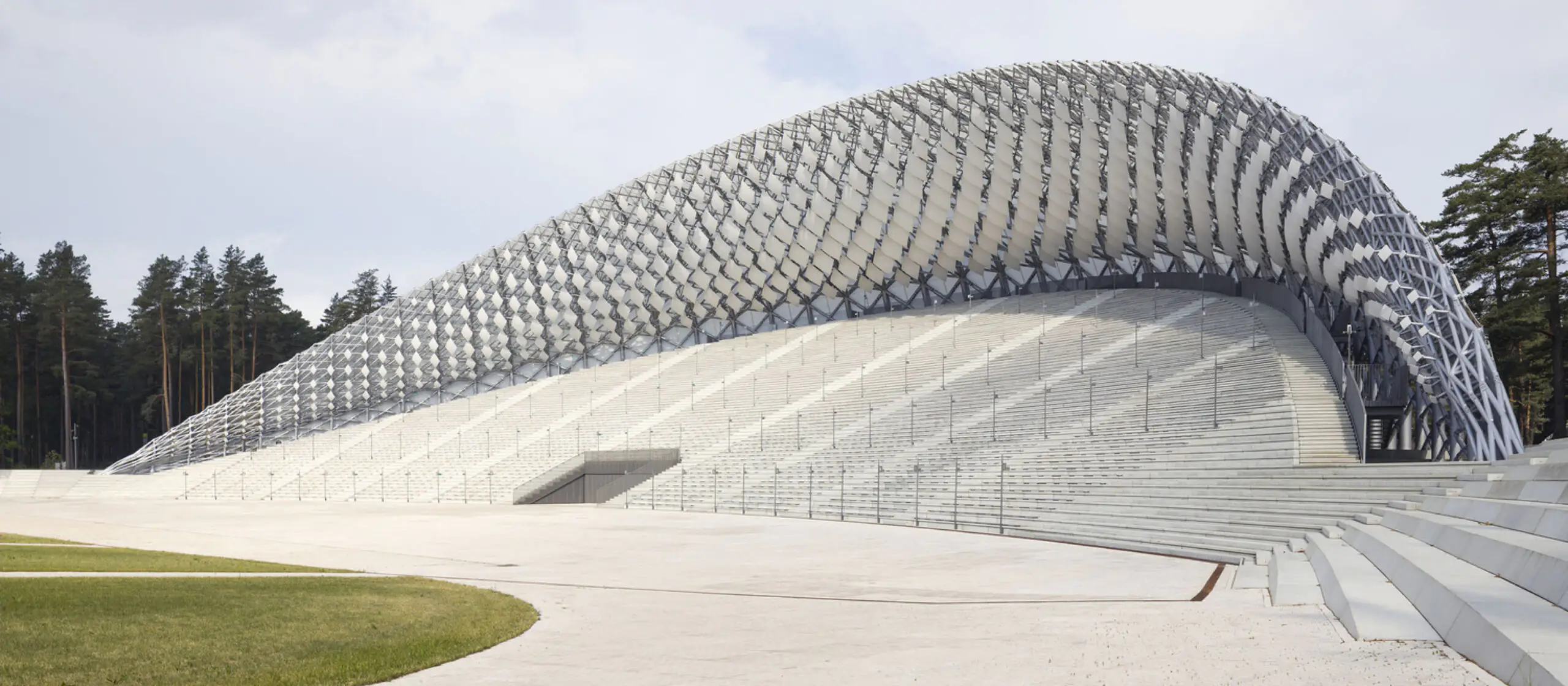
archdaily.com
The history of the Big Bandstand in Mezhapark dates back to the Soviet occupation years. The first project in the style of Stalinist neoclassicism was completed for the XII Song Festival in 1955. Then the stage was renovated several times, and in 1990 it was reconstructed according to the project of architects Andrejs Ģelzis and Juris Paegle.
The acoustics were developed by Andris Zabrauskise, the author of more than 300 acoustic solutions for concert venues throughout the Baltic States and an associate professor at Riga Technical University (RTU). When it was decided to rebuild the Mežaparks stage again in the 2000s, Zabrauskis was again invited to the project.
Architecture
The competition for the stage was announced more than 15 years ago, in 2007. Among the 17 works entered, a project by the architects Juris Poga and Austris Mailītis was chosen as the best. The clients were the Riga City Municipality and the Latvian National Cultural Center.
The reconstruction began on March 11, 2016. Works were completed in two stages. By 2018, it was reconstructing the auditorium area and the underground floor with service rooms, a cafe, and retail space. The second phase, which began in October 2020, included the construction of a utility building, warehouse, and bandstand with four above-ground and two underground levels. This part of the project was finished on June 11, 2021.
Architect Mailītis was pleased with the project and called it “a happiness”. He emphasized that choral singing in the Baltic States is very close to religious practices in terms of keeping various rituals and traditions. Therefore, during the working on the concept, the architects turned to the most ancient, archetypal symbols, mostly natural ones.
The circular shape of the bandstand is “a cradle of songs, a symbol of beginnings and light”. It is clearly visible even from a long distance. It was particularly important in that case: in a song festival, the interval between the choristers and the audience can be more than a hundred meters. For the same reason it was necessary to provide really good acoustics, which would not allow the sound to disperse in the huge open space.
Poga and Mailītis divided the concept into five symbolic parts: “Mountain”, “Tree”, “Grove”, “Leaves”, and “Tree Сrown”.
Mountain
The bandstand is the symbol of a “mountain” that must be climbed for the song to spread far and wide. The parabolic silhouette is clearly visible from afar. The 12,874 choristers can perform here at the same time—almost twice as many as before. Moreover, the steps of the choir amphitheater have been made more steeply. So that the individual vocal groups can be heard clearly and distinctly.
The architects took care of the artist’s comfort. An adiabatic humidification system (a system based on natural water evaporation) was installed above the stage: in hot weather it will cool the artists with a water mist.
Tree
The bandstand consists of intertwined “tree patterns”. It’s a unique construction of columns and trusses. At its highest point its height is 35.8 meters. The longest trusses and pipes reach a length of 23 meters.
It was technically impossible to produce such a complex work in Latvia. As a result, the nearest company that could take up the order had to be found: it was the largest metal-rolling plant in Hungary. The shapes and loads of the steelwork were calculated using computer algorithms. Before being shipped to Riga, they were assembled at the plant, checked for safety and stability, scanned, and then disassembled and labeled for installation at Mezhapark
Grove
Constructions in the form of “trees” create a “silver grove” that extends over the singers. It’s a metaphor from the Latvian folk song “Caur sidraba birzi gāju,” which begins with the phrase: “Caur sidraba birzi gāju, ne zariņa nenolauzu” or “I walked through the silver grove and did not break a twig…”.
Mailītis calls the grove a very successful setting for the music scene: Japanese acoustic engineers (who are considered the best in the world) define the forest as the best place for choral music.
Leaves
As leaves to the branches of trees, the metal structures above the stage are attached to the variety equipment: sound devices, light decorations, elements of protection against rain, but most importantly are acoustic shields. One hundred and fifty diamond-shaped plates reflect sound and improve acoustics.
According to Andris Zabrauskis, this sound-reflecting system is the largest in the world and has no analogues. Combined with the stage setup, it gives the most natural sound possible. Choristers and listeners on the previous bandstand were used to the sound coming from one side, from the stage. But on the renewed stage the music and voices became much more volumetric.
Tree Crown
The dome of the bandstand, “Tree Crown”, consists of a membrane covering. It has an area of 5,324 m². It is attached to 43 columns. Seven German specialists and 19 Latvian industrial climbers worked on its installation. The material was made of glass wool, which was manufactured at the Valmiera stikla šķiedra factory in Valmiera.
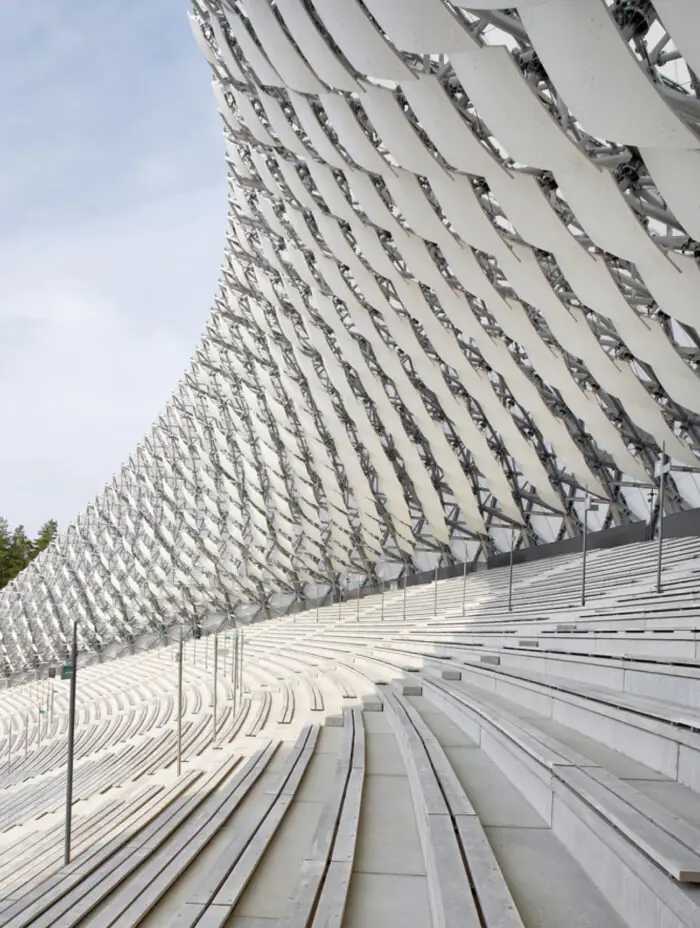
archdaily.com
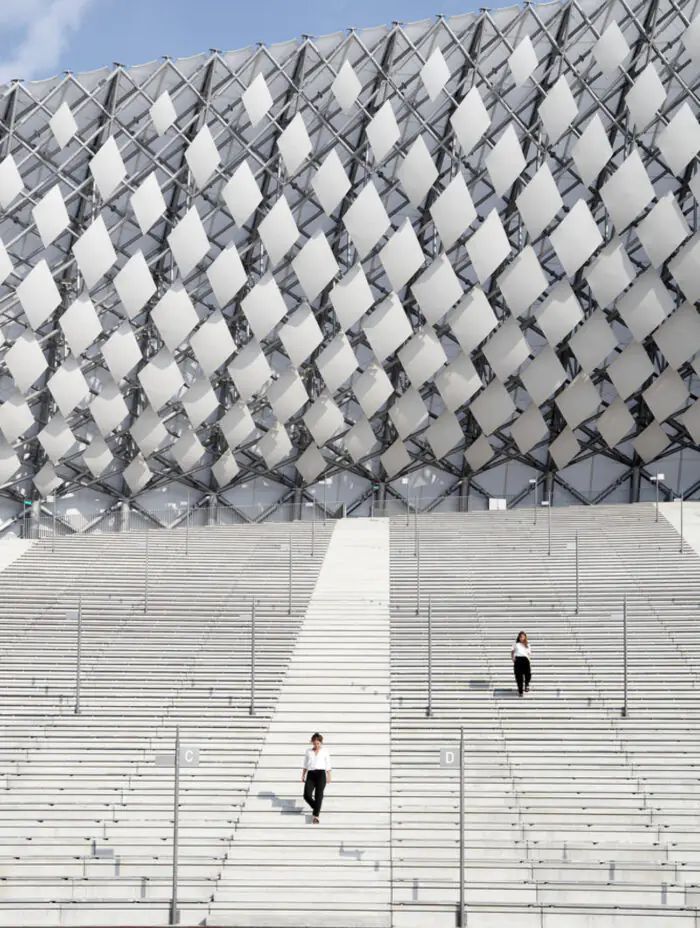
archdaily.com
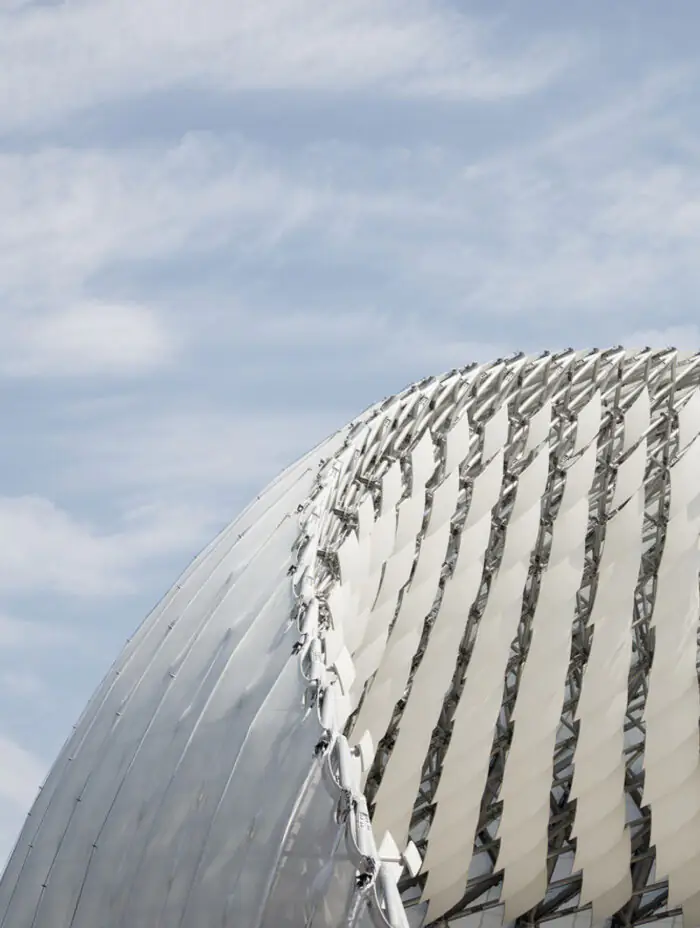
archdaily.com
Acoustics
During the design of the bandstand, the world’s largest acoustic model of the choir bleachers was produced. It was made at a scale of 1:33. In 2017, it was exhibited in the hall of the RTU Faculty of Architecture. Acoustic testing took six months. It was conducted by the Latvian R&D Akustika laboratory and the German company Müller BBM Akustik.
As Zabrauskis explained, during the test work, 35 ultrasonic sources were used instead of the chorus. Spectators were replaced by microphones, which were used to take measurements. This system is considered the most reliable and objective.
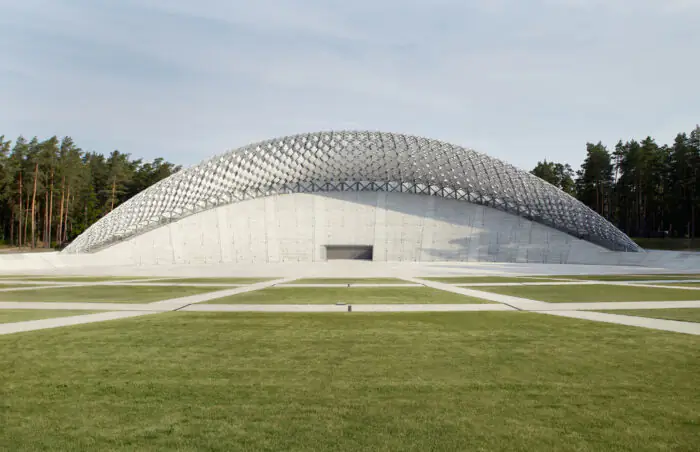
archdaily.com
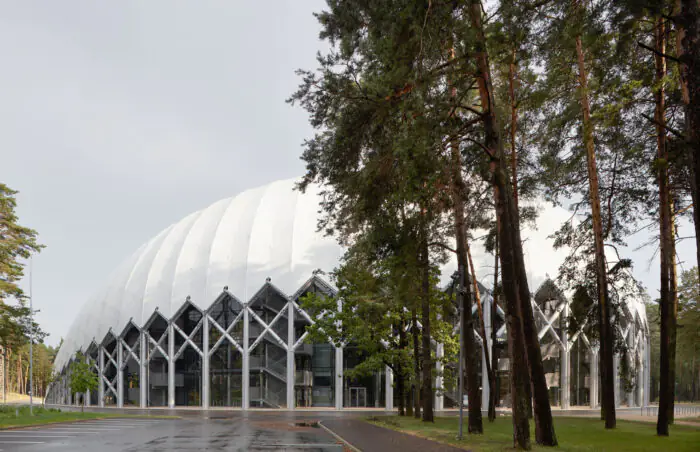
archdaily.com
Zabrauskis points out that during the first reconstruction of the stage in the 1990s the sound did not turn out so well: “already in the early stages of project development some questionable decisions were made”. But this time the future conditions were modeled very accurately, so the result was predictable and positive. Anyway, Zabrauskis was completely satisfied.
Architect Jānis Dripe, an expert on architecture from the Ministry of Culture, agreed with him: he said that the acoustics here are absolutely unique. Without exaggeration, there are no similar solutions on this scale anywhere else in the world.
You can read more about how the festival itself takes place in another article.


